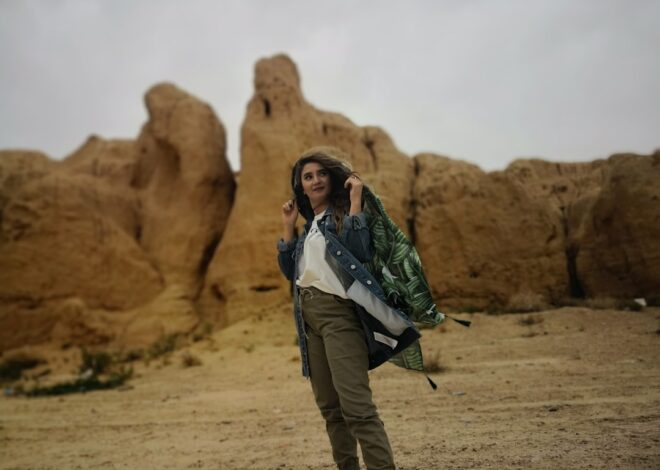
Stay Dry and Comfortable with Moisture Wicking Socks
Moisture wicking socks are a type of performance sock designed to keep your feet dry and comfortable during physical activity. These socks are made from special synthetic materials that are engineered to pull moisture away from the skin and allow it to evaporate quickly, keeping your feet dry and preventing blisters and discomfort. Moisture wicking socks are popular among athletes, hikers, and anyone who spends a lot of time on their feet, as they provide superior comfort and performance compared to traditional cotton socks.
Moisture wicking socks come in a variety of styles, including ankle socks, crew socks, and knee-high socks, and are available for both men and women. They are often used in conjunction with moisture wicking shoes to provide the ultimate in foot comfort and performance. Whether you’re hitting the gym, going for a run, or just spending a long day on your feet, moisture wicking socks can help keep your feet dry and comfortable, allowing you to focus on your activity without worrying about sweaty, uncomfortable feet.
Key Takeaways
- Moisture wicking socks are designed to keep your feet dry and comfortable by pulling moisture away from the skin.
- These socks work by using special materials that are designed to wick moisture away from the skin and allow it to evaporate more easily.
- The benefits of moisture wicking socks include preventing blisters, reducing odor, and keeping your feet dry and comfortable during physical activity.
- Anyone who is active or spends a lot of time on their feet can benefit from wearing moisture wicking socks, including athletes, hikers, and people who work on their feet all day.
- When choosing moisture wicking socks, consider the material, fit, and intended use to ensure you get the right pair for your needs.
How do Moisture Wicking Socks Work?
Moisture wicking socks work by using special synthetic materials that are designed to pull moisture away from the skin and allow it to evaporate quickly. These materials, such as polyester, nylon, and spandex, have hydrophobic (water-repelling) properties that draw moisture away from the skin and towards the outer surface of the sock. Once the moisture reaches the outer surface of the sock, it can evaporate more easily than it would if it were trapped against the skin, keeping your feet dry and comfortable.
In addition to their moisture-wicking properties, many moisture wicking socks also feature ventilation panels and strategic cushioning to provide additional comfort and breathability. These features help to further enhance the performance of the socks, making them ideal for high-intensity activities such as running, hiking, and sports. By keeping your feet dry and comfortable, moisture wicking socks can help prevent blisters, hot spots, and discomfort, allowing you to focus on your activity without being distracted by sweaty, uncomfortable feet.
Benefits of Moisture Wicking Socks
There are numerous benefits to wearing moisture wicking socks, especially during physical activity. One of the primary benefits is their ability to keep your feet dry and comfortable by pulling moisture away from the skin and allowing it to evaporate quickly. This can help prevent blisters, hot spots, and discomfort, allowing you to focus on your activity without being distracted by sweaty, uncomfortable feet. Additionally, moisture wicking socks often feature ventilation panels and strategic cushioning to provide additional comfort and breathability, further enhancing their performance.
Another benefit of moisture wicking socks is their ability to regulate temperature and reduce odor. By keeping your feet dry and comfortable, these socks can help prevent overheating and reduce the growth of odor-causing bacteria, keeping your feet feeling fresh and comfortable throughout the day. This can be especially beneficial during long periods of physical activity or in hot weather, when sweaty feet can lead to discomfort and odor. Overall, moisture wicking socks offer superior comfort and performance compared to traditional cotton socks, making them a popular choice among athletes, hikers, and anyone who spends a lot of time on their feet.
Who Should Wear Moisture Wicking Socks?
| Activity | Reason to Wear Moisture Wicking Socks |
|---|---|
| Running | To keep feet dry and prevent blisters |
| Hiking | To wick away sweat and reduce friction |
| Cycling | To improve comfort and prevent chafing |
| Gym workouts | To maintain dryness and reduce odor |
Moisture wicking socks are ideal for anyone who engages in physical activity or spends a lot of time on their feet. This includes athletes, hikers, runners, gym-goers, and anyone who participates in sports or outdoor activities. These socks are also beneficial for people who work in professions that require long periods of standing or walking, such as healthcare workers, retail employees, and hospitality staff. Additionally, moisture wicking socks can be beneficial for anyone who struggles with sweaty feet or foot odor, as they can help keep the feet dry and comfortable throughout the day.
Moisture wicking socks are available in a variety of styles and sizes for both men and women, making them suitable for a wide range of individuals. Whether you’re hitting the trails for a hike, training for a marathon, or just looking for comfortable everyday socks, moisture wicking socks can provide superior comfort and performance compared to traditional cotton socks. By keeping your feet dry and comfortable, these socks can help prevent blisters, hot spots, and discomfort, allowing you to focus on your activity without being distracted by sweaty, uncomfortable feet.
How to Choose the Right Moisture Wicking Socks
When choosing moisture wicking socks, there are several factors to consider to ensure you find the right pair for your needs. First, consider the type of activity you will be engaging in while wearing the socks. For high-intensity activities such as running or hiking, look for moisture wicking socks with strategic cushioning and ventilation panels to provide additional comfort and breathability. For everyday wear or less intense activities, a lighter weight sock may be sufficient.
Next, consider the material of the socks. Most moisture wicking socks are made from synthetic materials such as polyester, nylon, or spandex, which have hydrophobic properties that draw moisture away from the skin. Look for socks with a high percentage of these materials to ensure maximum moisture-wicking performance. Additionally, consider the fit and style of the socks. Look for a snug but comfortable fit that won’t bunch or slide down during activity, and choose a style that suits your preferences, whether it’s ankle socks, crew socks, or knee-high socks.
Finally, consider any additional features that may be important to you, such as arch support or seamless toe construction. These features can further enhance the comfort and performance of the socks, making them ideal for specific activities or foot types. By considering these factors when choosing moisture wicking socks, you can ensure that you find the right pair for your needs and enjoy superior comfort and performance during physical activity.
Tips for Caring for Moisture Wicking Socks

To ensure that your moisture wicking socks continue to provide superior comfort and performance over time, it’s important to care for them properly. First, always follow the care instructions provided by the manufacturer to ensure that you wash and dry your socks correctly. Most moisture wicking socks can be machine washed and dried on a low heat setting, but it’s important to avoid using fabric softener or bleach, as these can reduce the effectiveness of the moisture-wicking properties.
Additionally, consider washing your moisture wicking socks inside out to help preserve their performance over time. This can help prevent any buildup of oils or sweat on the outer surface of the sock that could reduce its ability to wick moisture away from the skin. Finally, avoid exposing your moisture wicking socks to excessive heat or direct sunlight for prolonged periods of time, as this can cause damage to the synthetic materials and reduce their effectiveness.
By following these tips for caring for moisture wicking socks, you can help ensure that they continue to provide superior comfort and performance over time. Proper care can help preserve the moisture-wicking properties of the socks and extend their lifespan, allowing you to continue enjoying dry, comfortable feet during physical activity.
Other Moisture Wicking Products
In addition to moisture wicking socks, there are a variety of other products available that are designed to help keep you dry and comfortable during physical activity. Moisture wicking underwear is a popular choice among athletes and outdoor enthusiasts, as it can help prevent chafing and discomfort by keeping the skin dry. Moisture wicking shirts and base layers are also available for both men and women, providing superior comfort and performance compared to traditional cotton clothing.
For those who spend a lot of time outdoors in hot weather, moisture wicking hats and headwear can help keep you cool and dry by pulling sweat away from the skin. Additionally, there are a variety of accessories available that are designed to help keep you dry during physical activity, such as wristbands and headbands made from moisture-wicking materials. By incorporating these products into your activewear wardrobe, you can enjoy superior comfort and performance during any activity while staying dry and comfortable.
Overall, moisture wicking products offer numerous benefits for anyone who engages in physical activity or spends a lot of time outdoors. By pulling moisture away from the skin and allowing it to evaporate quickly, these products can help prevent discomfort, chafing, and odor while keeping you dry and comfortable throughout the day. Whether you’re hitting the trails for a hike or hitting the gym for a workout, incorporating moisture wicking products into your activewear wardrobe can help enhance your performance and enjoyment of any activity.
If you’re interested in learning more about moisture wicking socks, you should check out this article on Frovozo. They have a great selection of moisture wicking socks and provide helpful information on the benefits of wearing them during physical activity. Whether you’re a runner, hiker, or just someone who wants to keep their feet dry and comfortable, moisture wicking socks are a game changer. So head over to Frovozo and see what they have to offer!
FAQs
What are moisture wicking socks?
Moisture wicking socks are designed to keep your feet dry by pulling moisture away from the skin and allowing it to evaporate more easily. They are typically made from synthetic materials like polyester or nylon, which are better at wicking moisture than traditional cotton socks.
How do moisture wicking socks work?
Moisture wicking socks work by using special synthetic fibers that are designed to pull moisture away from the skin and towards the outer surface of the sock. This allows the moisture to evaporate more quickly, keeping your feet dry and comfortable.
What are the benefits of wearing moisture wicking socks?
The benefits of wearing moisture wicking socks include keeping your feet dry and comfortable, reducing the risk of blisters and fungal infections, and providing better overall foot health. They are especially beneficial for athletes and outdoor enthusiasts who engage in activities that cause their feet to sweat.
Who can benefit from wearing moisture wicking socks?
Anyone can benefit from wearing moisture wicking socks, but they are especially beneficial for athletes, hikers, runners, and anyone who spends a lot of time on their feet. They are also great for people with sweaty feet or those who are prone to blisters or fungal infections.
How should moisture wicking socks be cared for?
Moisture wicking socks should be washed in cold water and air-dried to maintain their moisture wicking properties. Avoid using fabric softeners or bleach, as these can reduce the effectiveness of the moisture wicking fibers.


